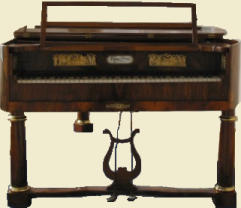Visit of Sankt Poelten
In the place of the Roman city Aelium Cetium a monastery was built after 760. Next to it a settlement was built, which received its town charter in 1159. Today Sankt Pölten is the capital of Lower Austria. The old town presents itself as a baroque town with well preserved buildings and many sights. Famous artists such as Jakob Prandtauer, Joseph Munggenast, Paul Troger, Schmid from Krems and Bartholomeo Altomonte lived and worked here. The cathedral church is a late Romanesque, early Gothic building, which was baroque by Jakob Prandtauer, later by his nephew Josef Muggenast.

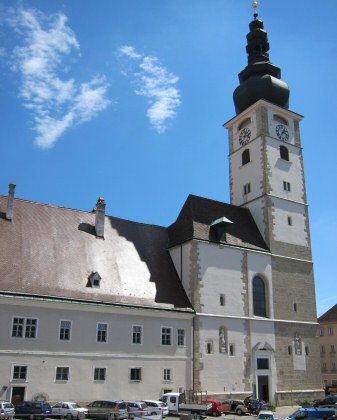
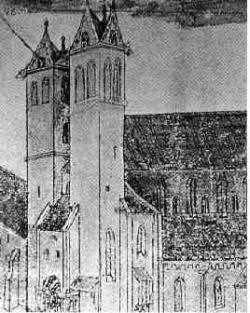
The St. Poelten Cathedral
Where's the second tower of the west complex? In a sketch from around 1400 it was still there. According to the cathedral chronicle, the north tower was destroyed in a fire in
1512.
The Romanesque south tower was raised in 1693 and probably received its baroque tower onion.

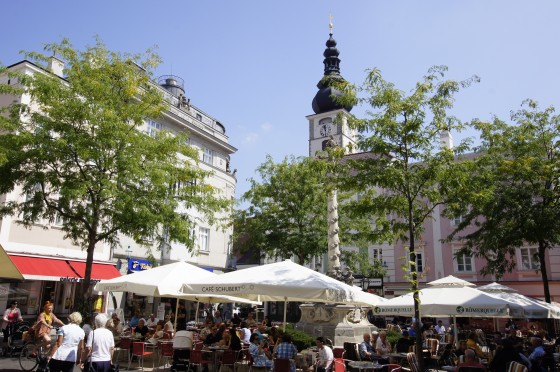
The Herrenplatz is very busy in summer.
There is a Nepomuk statue in the facade of the Palais Weinhardtsm Herrenplatz ist im Sommer viel los.

In front of the town hall with baroque facade by Joseph Munggenast (1727)
Photo: 2001
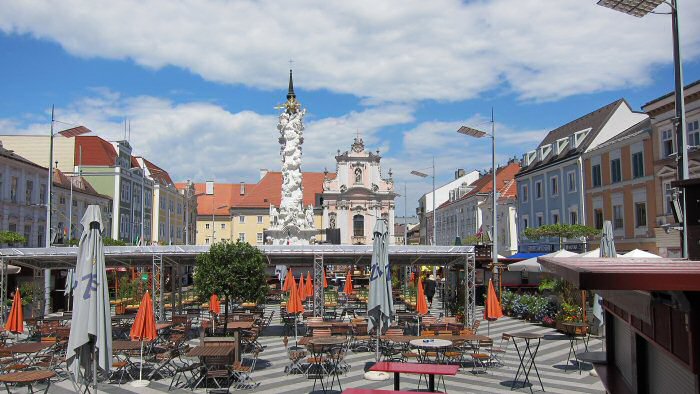
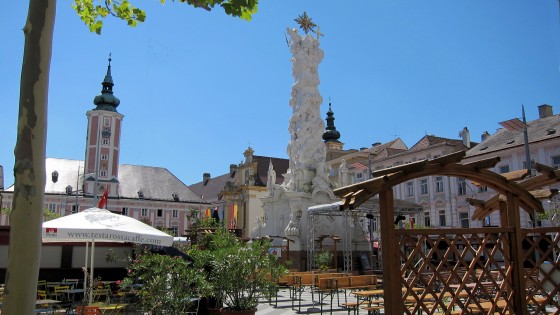
In summer there is usually some kind of festival on the town hall square. In the middle is the Trinity Column. The baroque church in the background is the Franciscan church. On the other side of the square is the town hall with its octagonal tower. It is from the year 1591
Photos: August 2012
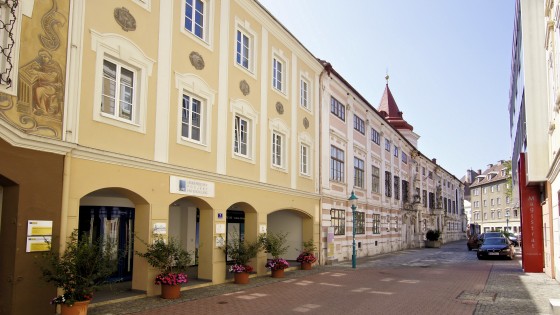
View from Riemerplatz into the Linzerstrasse with many baroque houses. In the background the baroque façade (Jakob Prandtauer) of the Institute of the English Fräuleins

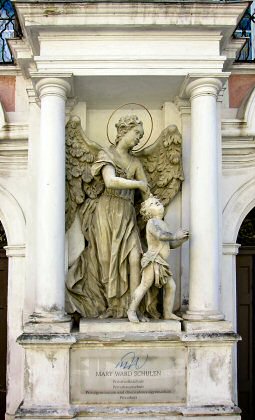
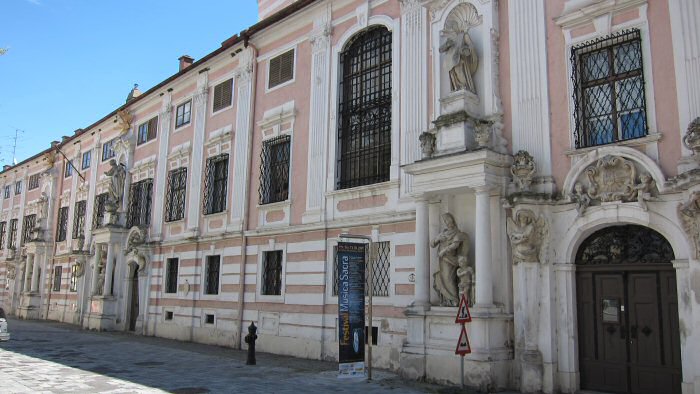
The institute building of the English Fräuleins (school of the women's order Congregatio Jesu, founded by Maria Ward) was built by Jakob Prandtauer around 1707. The baroque façade is one of the most beautiful in Lower Austria.
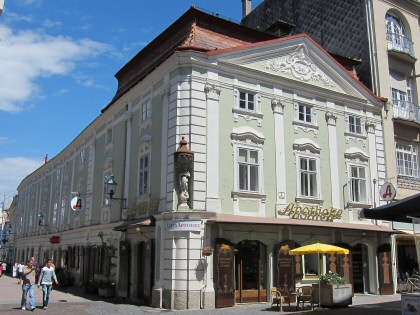
The "Apotheke Zum Goldenen Löwen" pharmacy near Riemerplatz has existed since 1545 and is therefore not only the oldest pharmacy but also the oldest shop in St. Pölten. The core of the building dates back to the 16th century, the baroque façade was designed by Joseph Munggenast.
Photo: G. Eichinger, August 2012
and August 2014

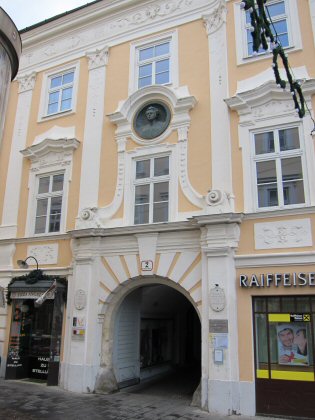
Here in today's Schuberthaus, the composer Franz Schubert held the first "Schubertiade" in 1821 during his stay in St. Pölten. Above the entrance is a huge Schubert relief. Various performances still take place in the Schubert Hall today.
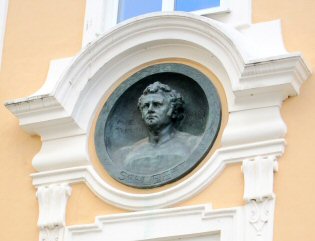
In the Schubert room of the house is the "Schubert Piano", originally from Atzenbrugg.

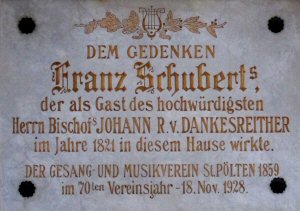
Memorial plaque at the bishop's palace in the Augustinian Canonry
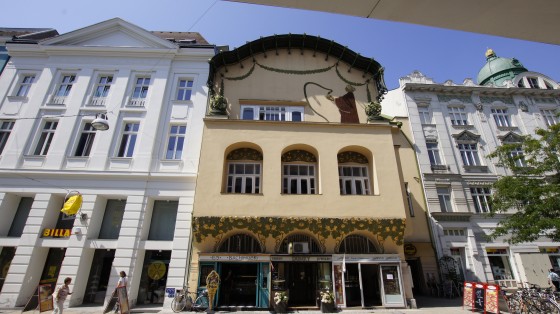
In the Kremsergasse, near the train station, there is an art nouveau building, the Olbrich House. It is a private residence built by Joseph Maria Olbrich in 1899 by order of the primary physician Hermann Stöhr. The architect also erected the building of the Vienna Secession. The "Medicine" relief depicts a female figure feeding an Aesculapian snake.

Entrance to the Augustinian Canonry. It was founded as a Benedictine monastery in the 8th century.
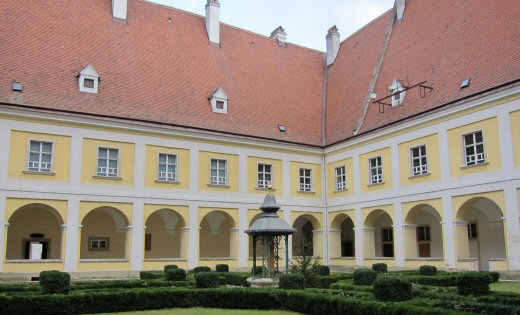
The cloister
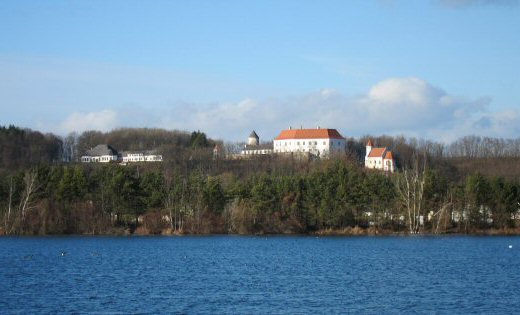
The newly renovated Viehofen Castle (district of St. Pölten - photo Jan. 2012). It was heavily damaged in the 2nd world war.


Danube cycle route
